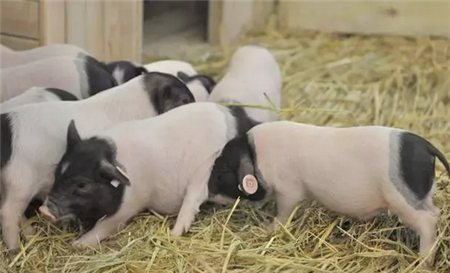The production efficiency of ternary sows is more than 30% lower than that of binary sows, how to narrow the gap?
According to the data released by Yongyi Consulting in March 2020, three-yuan sows account for nearly half of the existing stock sows (see figure below).
Myth 2: different stress levels, the same nutritional supply
At present, the environmental conditions of pig herds in China are too poor, and pig herd stress is widespread (shown in the following figure)
Myth 3: different pathogen pressure, the same nutritional supply
As shown in the picture: why do some pathogens "coexist" with pigs (hosts) without making pigs (hosts) sick frequently? Whether pigs coexist with pathogens or not is related to two factors.
One is overdose infection.
One is that the effective immunity level of the pig drops to the protective threshold.
The so-called overdose infection means that animals have a certain "bearing" capacity to pathogens. Within the load that animals can carry, animals will not get sick. Only when pathogens exceed the carrying capacity of animals will they become ill. Therefore, whether the disease occurs involves two factors, one is the number of pathogens, and the other is the carrying capacity of pigs, that is, the level of immunity.
Myth 4: different total food intake, the same nutritional supply
Myth 5: different genetic states, the same nutritional supply
Ternary sows are typical "fat turning sows", and their genetic state is different from that of binary sows, which is reflected in two aspects, namely, fast growth rate and high lean meat rate. As a result, there are three major reproductive problems: low estrus rate, poor milk and less effective litter size.
The Tian Advanced (2007) experiment showed that the average daily gain of Dushan Sanyuan pig was 702.12g, which was 5.79% higher than that of Changben binary pig.

In view of its fast growth, ternary sows are prone to obesity, resulting in poor estrus and dystocia during delivery.
At the same time, coupled with the imperfect development of the reproductive system of ternary sows, further aggravating the current situation of sexual maturity and non-synchronization of body maturity, the proestrus of ternary sows is later and the mating rate is not high.
In addition, the investigation found that the backfat of LY sows was thinner than that of DLY sows.
In view of this situation, our research in recent years has found that the breeding defects of ternary sows can be made up by nutritional methods.
First, feed restriction in advance, changing the special feed for sows during 50~60kg, and properly restricting feed with slightly lower nutrient concentration after feeding, feeding 2.5kg 2.8kg 150kg of reserve feed for sows in the 90~130kg section to 3.0~3.5kg 2 weeks before breeding.
The second is to increase backfat, properly adjust the large formula for ternary sow pregnancy feed, reduce the proportion of protein and increase the ratio of energy and cellulose (about 10%).
The third is to supplement reproductive nutrition at a special stage or even in the whole process. As shown in the following figure
Related
- On the eggshell is a badge full of pride. British Poultry Egg Market and Consumer observation
- British study: 72% of Britons are willing to buy native eggs raised by insects
- Guidelines for friendly egg production revised the increase of space in chicken sheds can not be forced to change feathers and lay eggs.
- Risk of delay in customs clearance Australia suspends lobster exports to China
- Pig semen-the Vector of virus Transmission (4)
- Pig semen-the Vector of virus Transmission (3)
- Five common causes of difficult control of classical swine fever in clinic and their countermeasures
- Foot-and-mouth disease is the most effective way to prevent it!
- PED is the number one killer of piglets and has to be guarded against in autumn and winter.
- What is "yellow fat pig"? Have you ever heard the pig collector talk about "yellow fat pig"?



